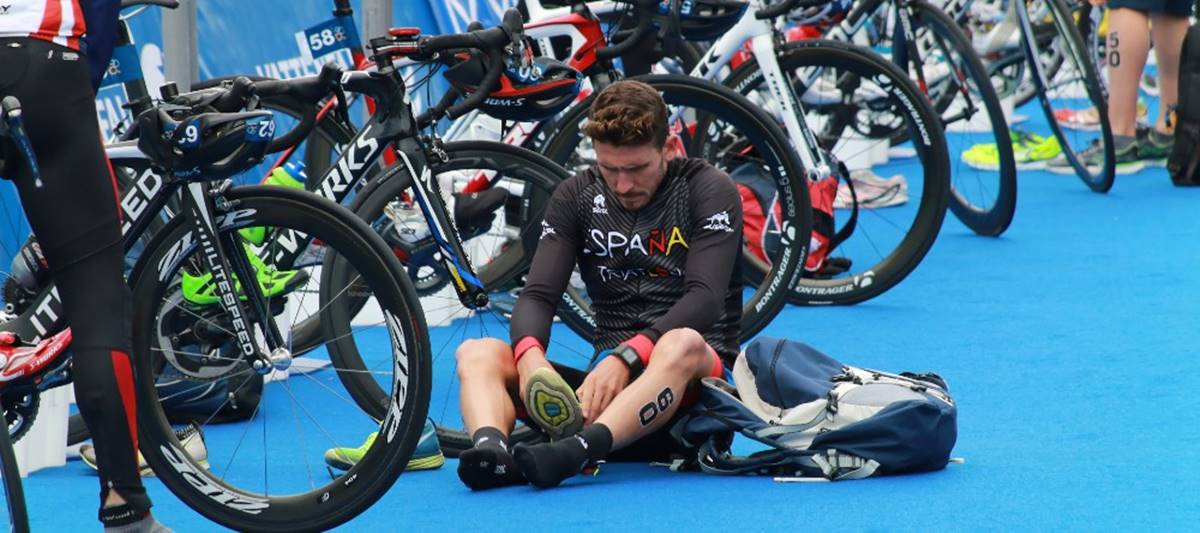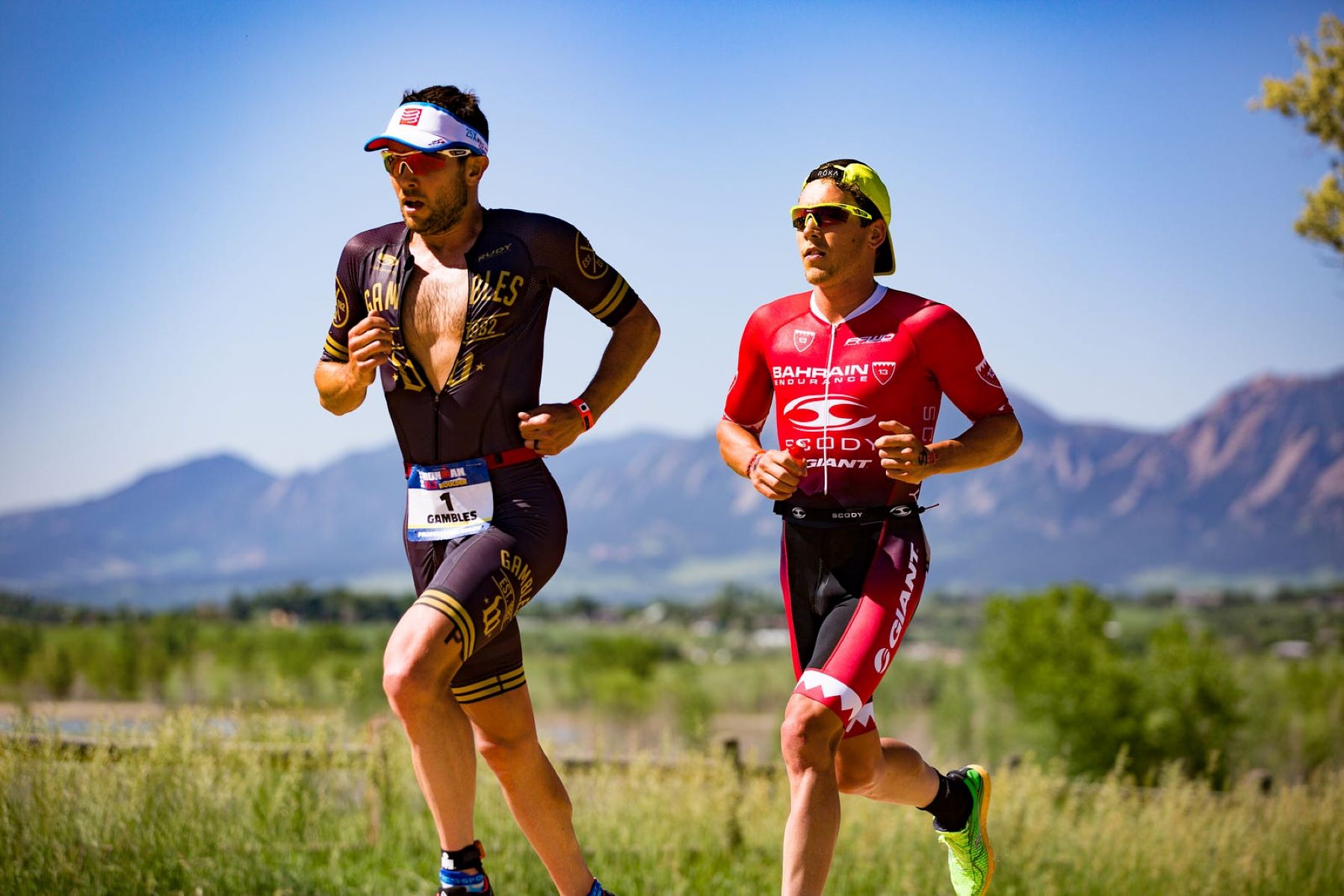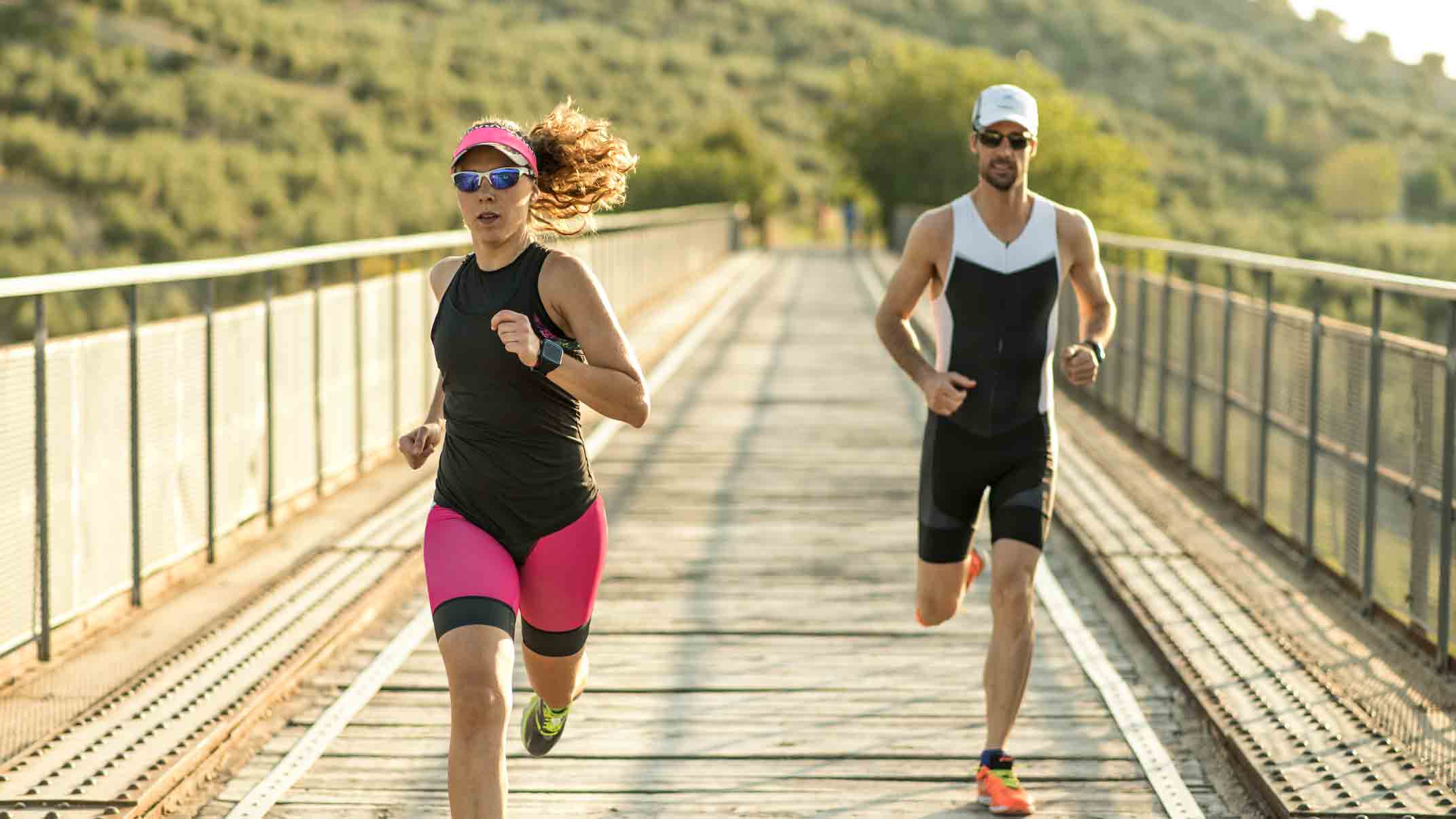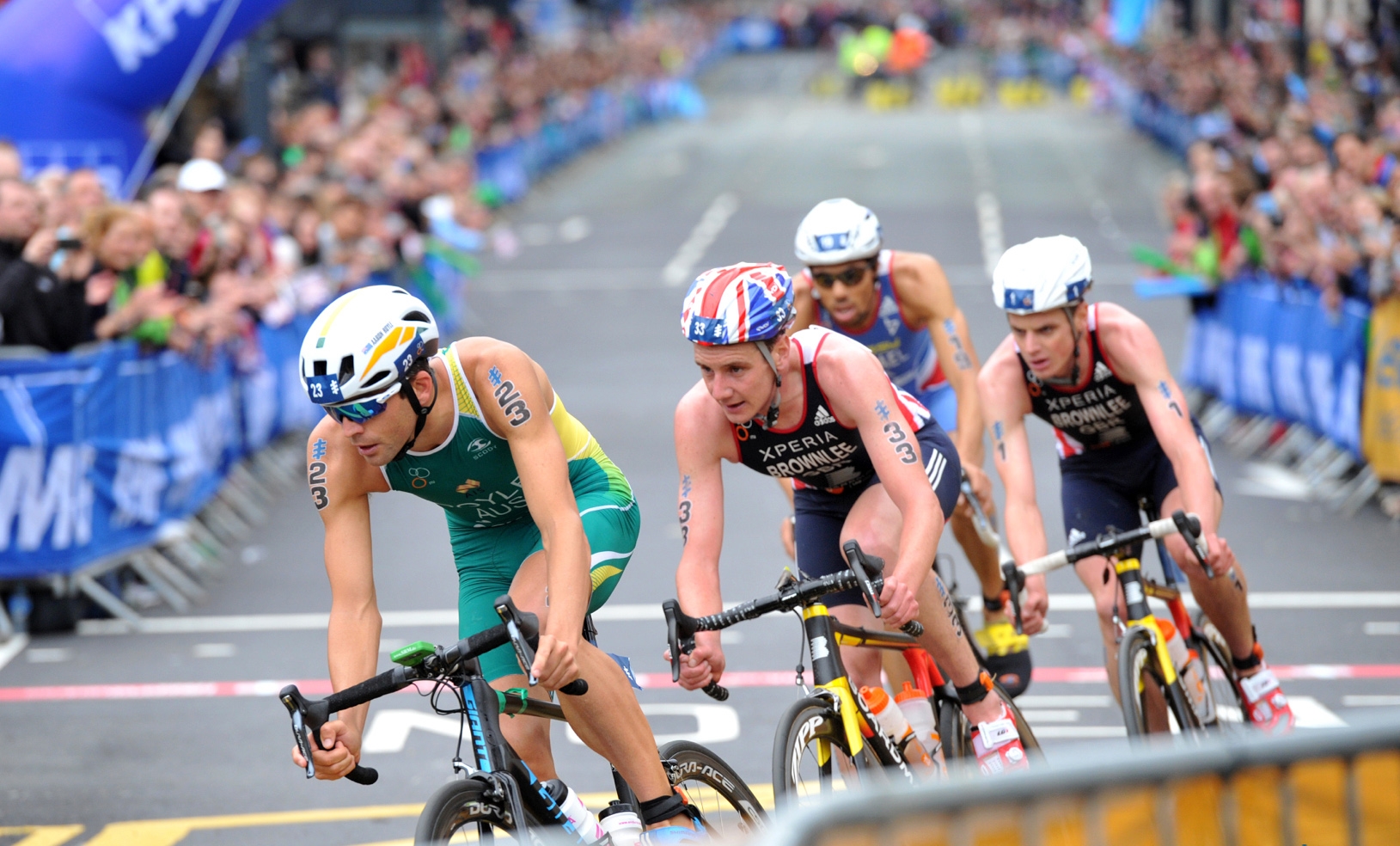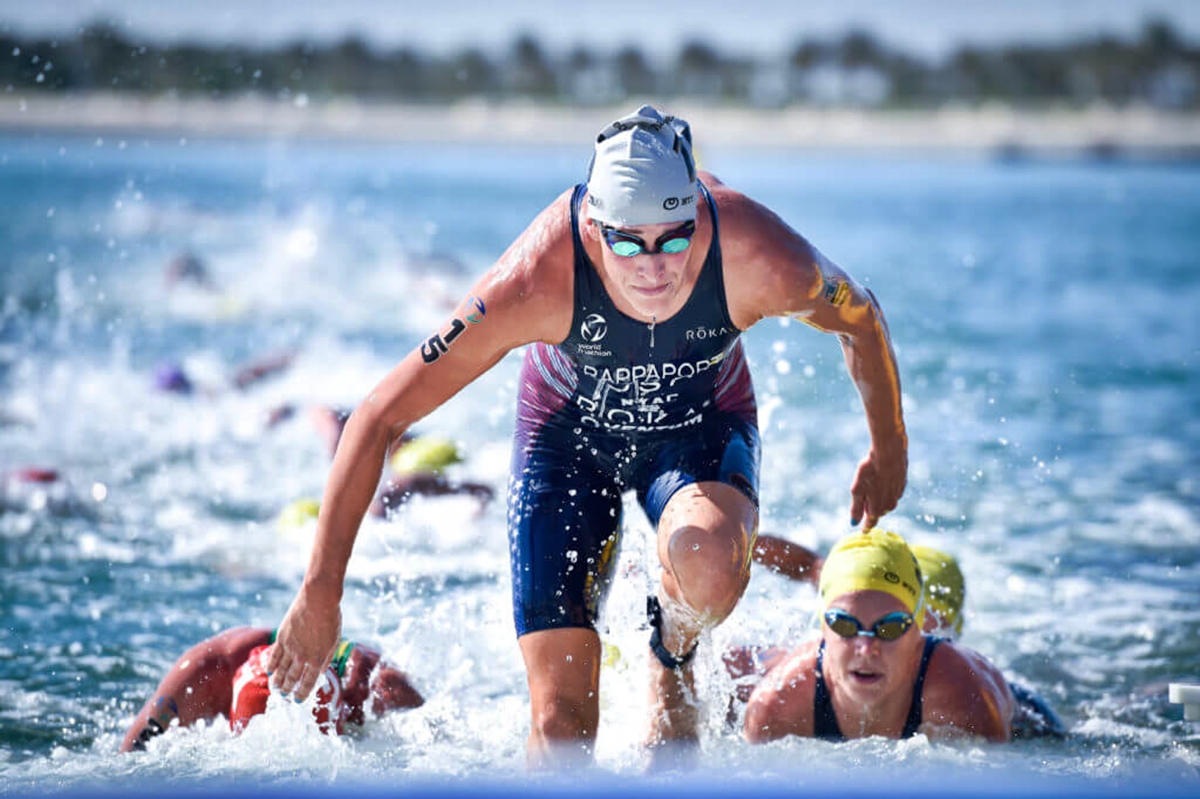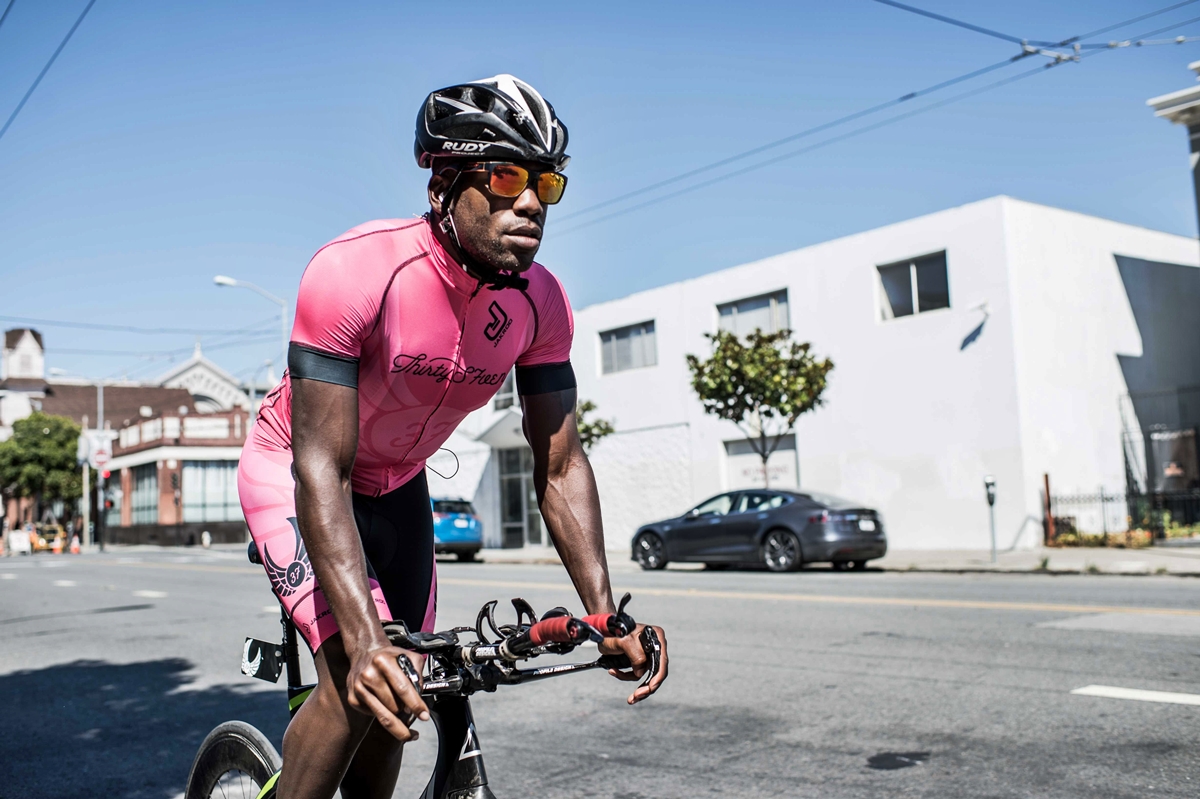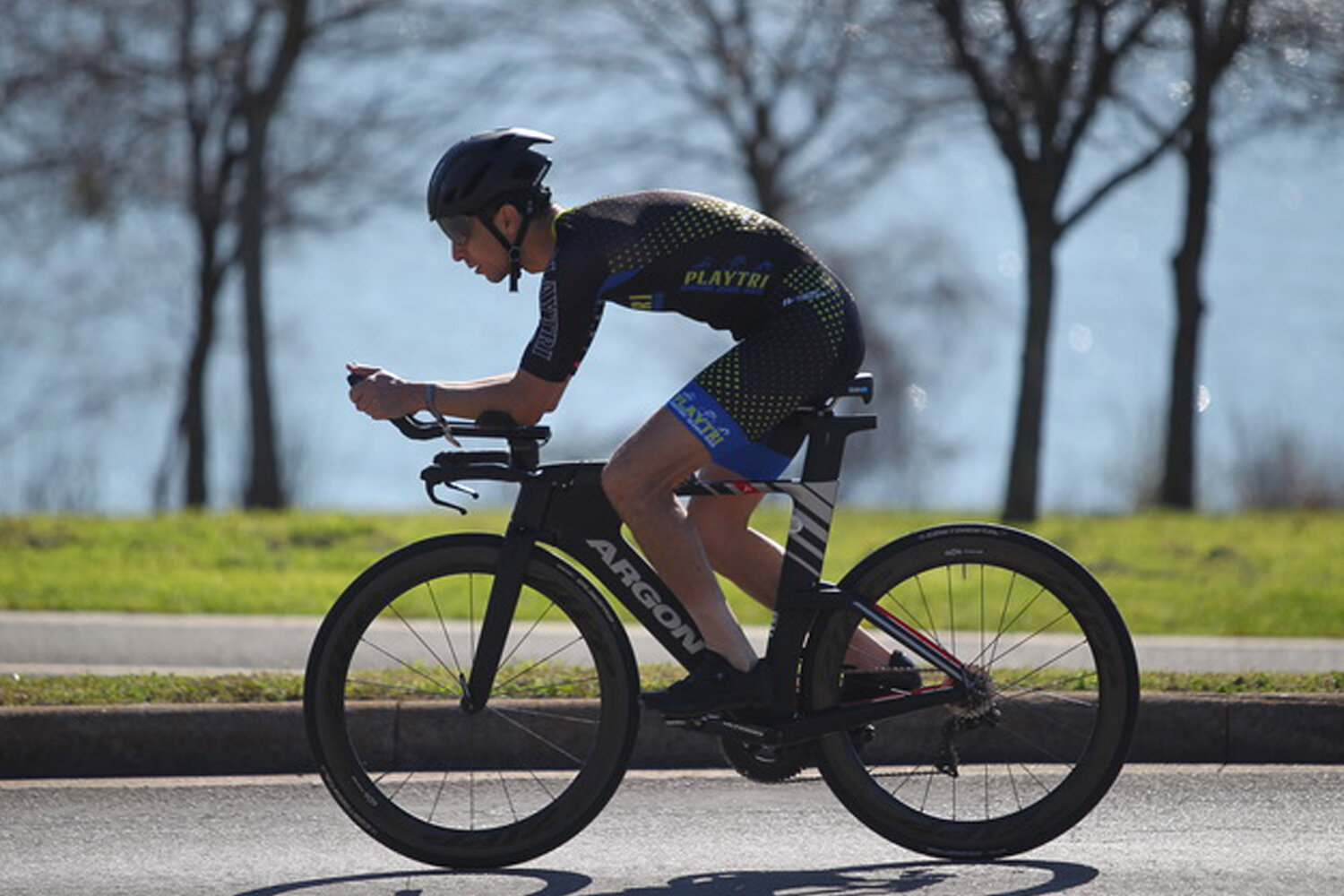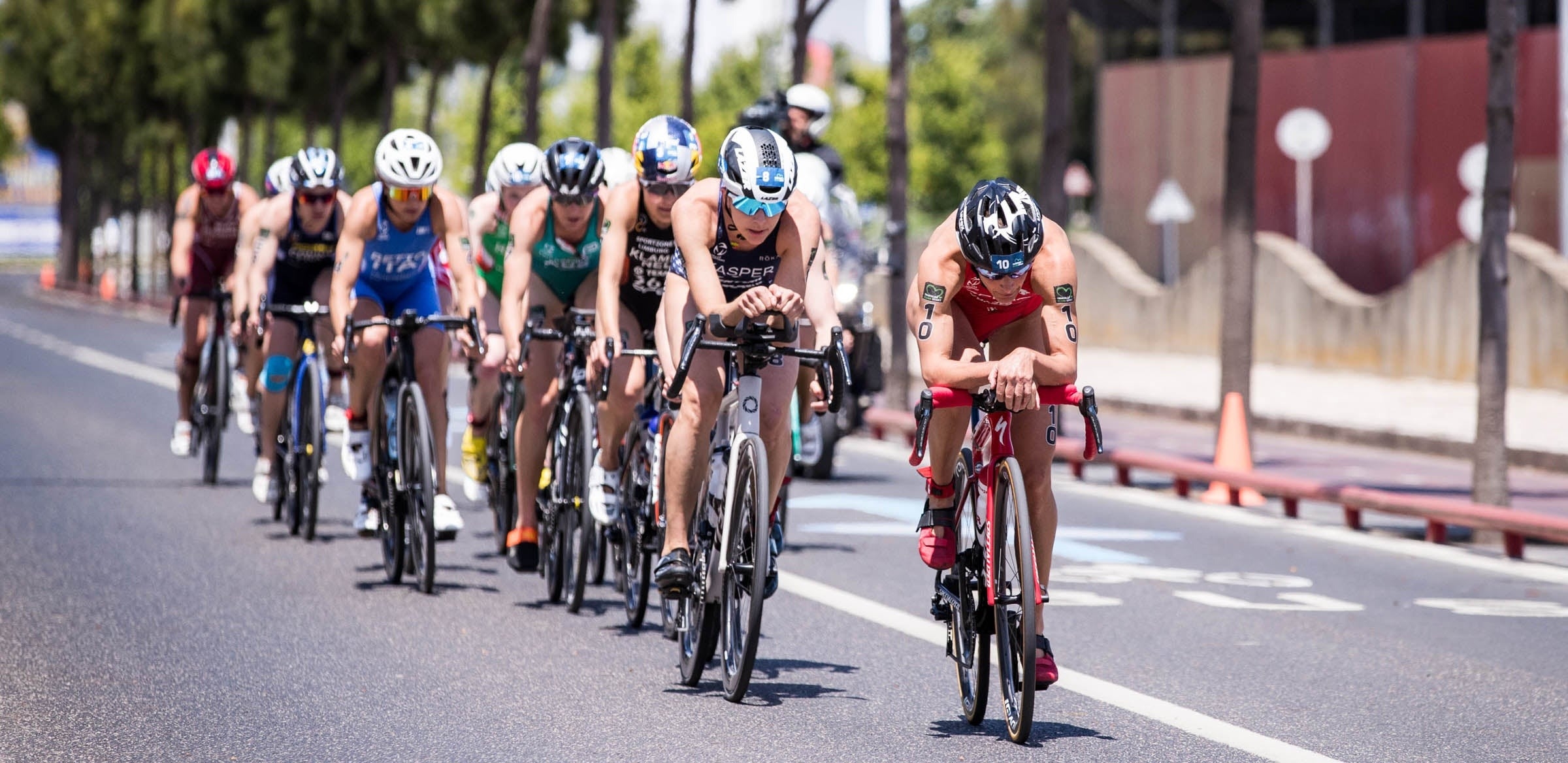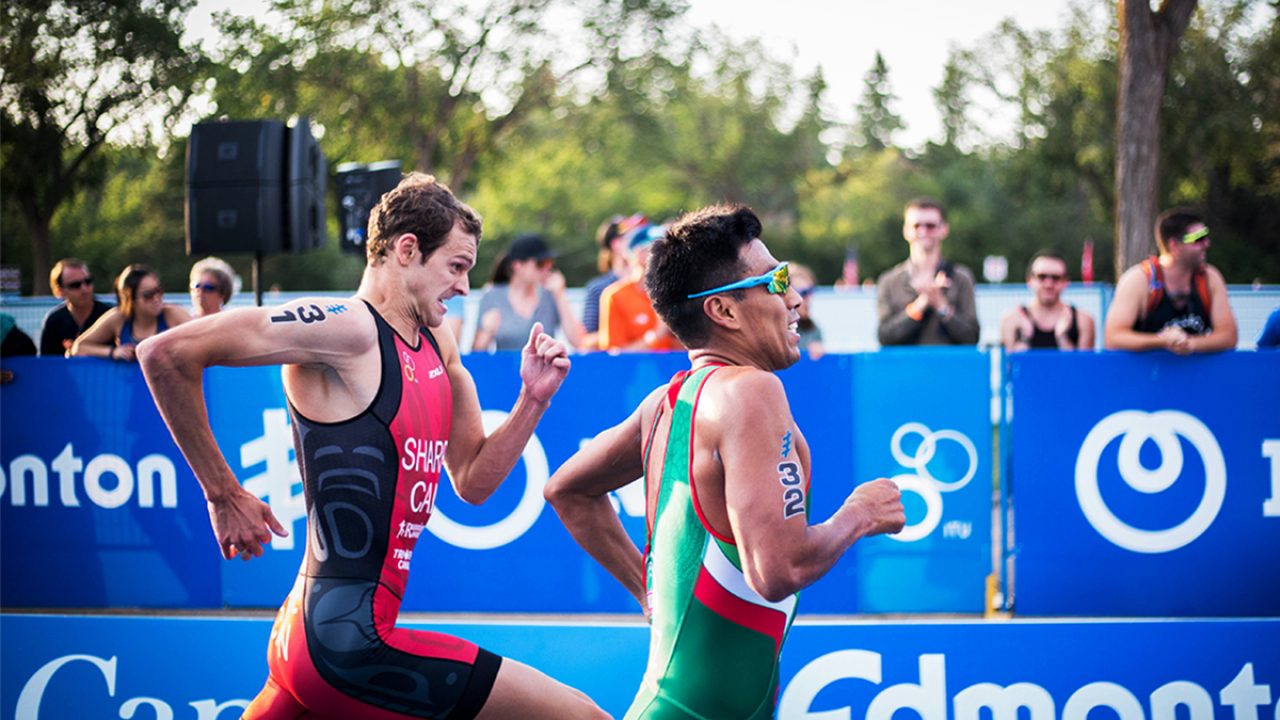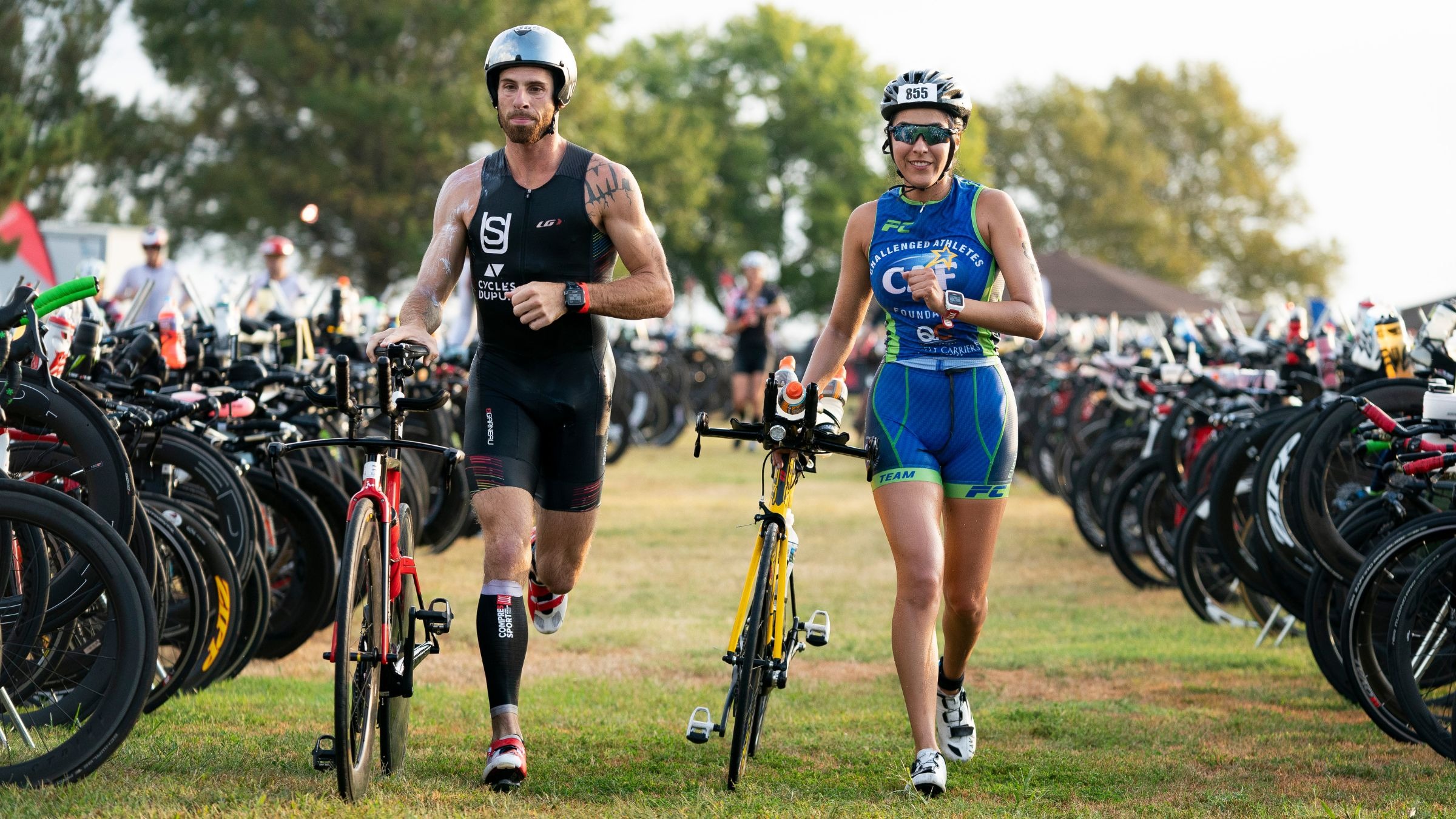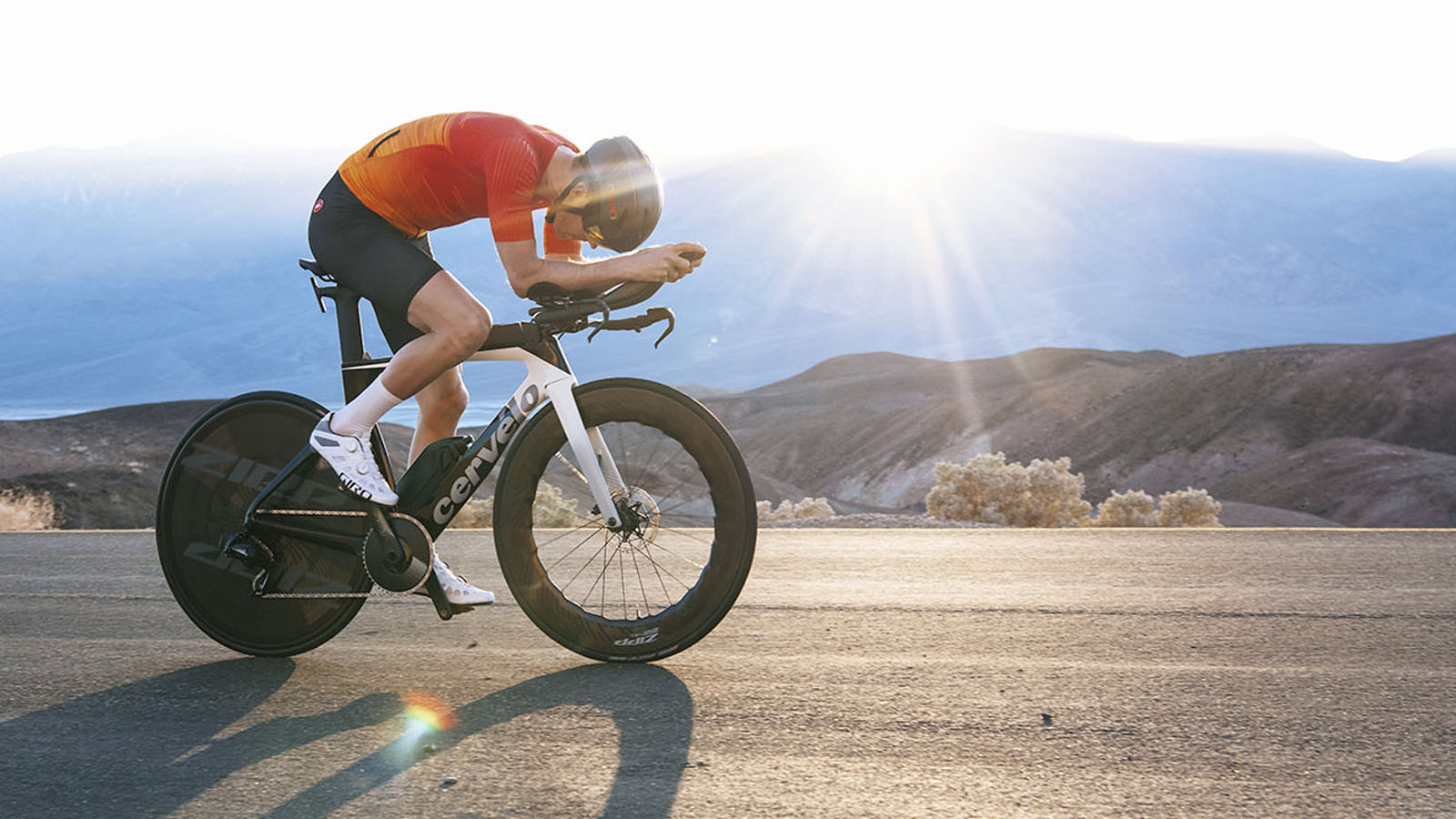

Featured
How To Fit For A Triathlon Bike
Modified: January 2, 2024
Learn the essential tips and techniques to properly fit yourself for a triathlon bike. Discover the featured methods to optimize your performance and comfort during the race.
Introduction
Welcome to the world of triathlons! Whether you’re a seasoned athlete or a beginner looking to take on a new challenge, participating in a triathlon is an exhilarating and rewarding experience. As you embark on your journey, one of the key components to consider is your choice of equipment, specifically your triathlon bike. The right bike can make a significant difference in your performance and overall enjoyment of the sport.
In this article, we will explore the benefits of choosing a triathlon bike, how to find the right size, the importance of a proper bike fit, adjusting the bike components, improving aerodynamics, and training effectively on your triathlon bike. By understanding these key aspects, you’ll be well-prepared to make informed decisions and optimize your performance on race day.
Before delving into the technical details, it’s important to remember that triathlon is not just a physical endeavor, but also a mental challenge. As you push your boundaries and strive for personal achievement, it’s essential to enjoy the process and embrace the journey. Your triathlon bike will become a trusted companion in this adventure, helping you reach new heights.
Now, let’s dive into the exciting world of triathlon bikes and discover how to find the perfect fit for your triathlon journey!
Benefits of a Triathlon Bike
Investing in a triathlon bike offers several advantages that can greatly enhance your performance and overall race experience. Here are some key benefits to consider:
- Improved aerodynamics: Triathlon bikes are designed with aerodynamics in mind, allowing you to cut through the wind more efficiently. The sleek frame geometry, integrated front end, and aero bars help reduce drag, enabling you to maintain higher speeds with less effort.
- Optimized power transfer: Triathlon bikes are engineered to maximize power transfer from your muscles to the pedals. They feature stiffer frames and more aggressive geometry, allowing you to generate and sustain higher speeds with each pedal stroke.
- Specific triathlon-specific features: Triathlon bikes often come equipped with features tailored to the demands of the sport. These include hydration systems, integrated storage compartments, and a geometry that positions the rider in an aerodynamic and efficient position for both the bike and the subsequent run.
- Comfort for long-distance rides: Triathlons involve covering long distances, and comfort is crucial. Triathlon bikes are designed to minimize fatigue and discomfort, with features such as padded saddles, ergonomic handlebars, and adjustable seat positions.
- Smooth transitions: Transitioning from the swim to the bike leg, and from the bike leg to the run, is a critical aspect of triathlon racing. Triathlon bikes facilitate quick and efficient transitions, with features such as easy-to-adjust saddle heights, quick-release mechanisms for swapping bike shoes, and integrated storage for nutrition and other essentials.
- Competitive advantage: When it comes to triathlon racing, every second counts. A high-performing triathlon bike can give you a competitive edge over your opponents, allowing you to shave off precious seconds or minutes from your overall race time.
- Confidence boost: Riding a triathlon-specific bike that fits well and performs optimally can boost your confidence and mental focus. When you feel comfortable and in control, you’ll be able to tackle challenging terrains and technical sections with greater ease.
These benefits combine to provide a platform for improved performance and enjoyment of the triathlon experience. By choosing a triathlon bike that suits your individual needs and goals, you’ll be poised for success on race day.
Finding the Right Bike Size
Choosing the right bike size is crucial for comfort, efficiency, and injury prevention. When it comes to triathlon bikes, the key measurements to consider are frame size and bike fit. Here’s how you can find the perfect size:
- Get a professional bike fit: Working with a professional bike fitter is highly recommended. They will assess your body dimensions, flexibility, and riding style to determine the ideal bike size and fit. They will also make necessary adjustments to ensure optimal comfort and performance.
- Consider your body measurements: Your height, inseam length, and arm length are important factors to consider when determining bike size. Different brands may have slightly varied sizing charts, so refer to each manufacturer’s guidelines.
- Test ride different sizes: If possible, test ride a few different bike sizes to determine which one feels the most comfortable and natural. Focus on the reach to the handlebars, saddle height, and the overall riding position. Remember, comfort and stability are key.
- Consider bike geometry: Triathlon bikes come in various geometries, such as traditional, aggressive, or women-specific. Each geometry has its own advantages and considerations, so choose one that aligns with your body type and preferences.
- Apply the “sizing versus fit” approach: Size refers to the measurements of the frame, while fit refers to the adjustments made to optimize your position on the bike. It’s essential to find a balance between frame size and bike fit for optimal comfort, power transfer, and aerodynamics.
Keep in mind that finding the right bike size is not a one-size-fits-all approach. The goal is to find a size and fit that aligns with your body proportions, flexibility, and riding goals. A professional bike fit can provide personalized guidance to ensure you get the best possible fit for your triathlon bike.
Proper Bike Fit
A proper bike fit is essential for maximizing comfort, efficiency, and performance on your triathlon bike. While it is highly recommended to work with a professional bike fitter, here are some key considerations for a proper bike fit:
- Saddle height: The height of your saddle plays a crucial role in pedaling efficiency and power transfer. The ideal saddle height allows for a slight bend in your knee when the pedal is at its lowest point.
- Reach to the handlebars: The reach, or distance from the saddle to the handlebars, affects your aerodynamics and overall body position on the bike. The ideal reach allows for a comfortable and sustainable riding position without straining your back, shoulders, or neck.
- Handlebar position: The handlebar position can be adjusted to suit your riding style and comfort. You can raise or lower the handlebars and adjust the angle to find the optimal position that promotes relaxation and control.
- Crank length: The length of the crank arms can affect your pedaling efficiency and comfort. If you have longer legs, longer crank arms may be more suitable for your biomechanics, while shorter legs may benefit from shorter crank arms.
- Foot alignment: Proper foot alignment on the pedals is crucial for efficient power transfer and injury prevention. Ensure that your feet are properly aligned and that your cleats are positioned correctly to avoid discomfort or strain on your knees.
- Customizable components: Many triathlon bikes come with adjustable components such as aero bars, stem height, and saddle position. These allow for further customization to fine-tune your bike fit and cater to your individual preferences and comfort.
Remember, a proper bike fit is not a one-time occurrence. As you progress in your triathlon journey, your body may change, and your bike fit may need to be adjusted. Regular check-ups with a bike fitter can help ensure that your bike fit remains optimized and in line with your current needs.
By prioritizing a proper bike fit, you’ll experience enhanced comfort, reduced risk of injuries, and improved efficiency, allowing you to perform at your best during your triathlon races.
Adjusting the Bike Components
Once you have found the right size and achieved a proper bike fit, it’s important to ensure that all the components of your triathlon bike are adjusted correctly. Here are some key components to focus on:
- Saddle position: The position of the saddle plays a significant role in your bike fit. Adjust the saddle height, fore-aft position, and tilt to achieve a comfortable and efficient riding position.
- Handlebar position: The handlebar position can be adjusted for optimal reach and comfort. Experiment with different stem lengths, rise angles, and aero bar positions to find the setup that works best for you.
- Brake and gear levers: Ensure that your brake and gear levers are positioned in a way that allows easy reach and control. Adjust the angle and position of the levers to ensure they are comfortable and easily accessible during your rides.
- Pedal and shoe alignment: Take the time to properly align your pedals and cycling cleats. Correct alignment improves pedaling efficiency, reduces the risk of discomfort, and minimizes the chances of developing knee or foot-related issues.
- Aero bar position: If your triathlon bike is equipped with aero bars, adjust their width, length, angle, and extensions to optimize your aerodynamic position. This will help you reduce wind resistance and maintain a more efficient and sustainable riding posture.
- Brake and gear adjustments: Regularly check and adjust your brakes and gears to ensure smooth and precise operation. If you are not confident in making these adjustments yourself, consult a professional bike mechanic for assistance.
- Tire pressure: Maintaining the correct tire pressure is crucial for both performance and safety. Make sure to check your tire pressure before each ride and adjust as needed based on the terrain and conditions.
Remember, small adjustments can make a big difference in your comfort and performance on the bike. Regularly review and fine-tune the adjustments of your bike components as needed to ensure that everything is optimized for your riding style and preferences.
By spending time on adjusting the bike components, you’ll create a bike setup that feels like an extension of yourself, enabling you to ride with confidence and efficiency during your triathlon races.
Improving Aerodynamics
Achieving optimal aerodynamics is crucial when it comes to triathlon racing. Enhancing your bike’s aerodynamic profile can significantly improve your speed and efficiency. Here are some key strategies to improve aerodynamics on your triathlon bike:
- Body position: Positioning your body in a streamlined and aerodynamic posture is essential. Practice maintaining a low frontal profile by tucking your elbows in, keeping your head down, and maintaining a relaxed but forward-leaning position.
- Optimal bike fit: Ensuring that your bike fit is dialed in correctly is crucial for proper aerodynamics. A professional bike fit can help you achieve a more aerodynamic position by adjusting handlebar height, saddle position, and aero bar placement.
- Bike frame and components: Choose a triathlon-specific bike frame that has been designed with aerodynamics in mind. Look for features such as aerodynamic tube shapes, internal cable routing, and integrated cockpit systems. Additionally, consider upgrading components such as deep-section aero wheels and aero helmets to further reduce drag.
- Aero accessories: Adding aero accessories to your bike can provide additional aerodynamic benefits. Consider adding items such as aero water bottles, bento boxes, and frame bags that are designed to be aerodynamically efficient.
- Proper clothing: Wear form-fitting and aerodynamic clothing while cycling. Opt for a triathlon suit or a close-fitting jersey and shorts to minimize drag. Avoid loose or baggy clothing that can act as a parachute and slow you down.
- Wind tunnel testing: For serious competitors looking to optimize their aerodynamics, wind tunnel testing can provide invaluable data. This testing involves analyzing your body position, bike setup, and equipment choices to identify areas for improvement and maximize your aerodynamic performance.
- Training for aerodynamics: Practice riding in an aerodynamic position during your training sessions. Work on maintaining a consistent and efficient pedal stroke while minimizing upper body movement. Focus on building core strength and stability to support your aerodynamic posture.
Improving aerodynamics on your triathlon bike may require some experimentation and adjustments. It’s important to find a balance between aerodynamics and comfort, as an overly aggressive position can lead to discomfort and decreased power output.
By implementing these strategies and continuously seeking ways to improve your bike’s aerodynamics, you’ll be able to slice through the wind more efficiently, maintain higher speeds with less effort, and ultimately achieve better race day performances.
Training on Your Triathlon Bike
Training on your triathlon bike is an essential part of your preparation for race day. Here are some key considerations to keep in mind when training on your triathlon bike:
- Get comfortable: Spend time getting familiar with your bike and gradually build up your comfort level. Practice mounting and dismounting, shifting gears smoothly, and engaging with the bike’s aerodynamic features. This will help you feel more at ease on your bike during the race.
- Focus on endurance: Triathlon races can be demanding in terms of endurance. Incorporate long-distance rides into your training plan to build up your endurance and get used to spending hours in the saddle. Gradually increase the duration and intensity of your rides over time.
- Integrate brick workouts: Brick workouts, which involve training back-to-back disciplines, are essential for the smooth transition from cycling to running. After completing a bike session, incorporate a short run to simulate race conditions and get your legs accustomed to the different sensations.
- Work on cadence: Cadence refers to the number of pedal rotations per minute. Find a cadence that feels comfortable and allows for efficient power transfer. Incorporate drills and interval workouts to improve your cadence and overall pedaling technique.
- Train in different terrains and conditions: Triathlon courses can vary in terrain and weather conditions. To prepare yourself, train in a variety of terrains such as hills, flats, and uneven surfaces. Additionally, practice riding in different weather conditions to build resilience and adaptability.
- Simulate race conditions: As race day approaches, simulate race conditions during your training sessions. Practice riding at race pace, incorporating surges and intervals to mimic the demands of the race. This will help you mentally and physically prepare for the challenges you’ll face during the actual event.
- Stay safe: Safety should always be a top priority. Wear a properly fitted helmet, obey traffic rules, and ride defensively. Invest in lights and reflective gear if you’ll be training in low-light conditions, and always carry identification and emergency contact information with you.
- Recover and listen to your body: Proper recovery is crucial to prevent overuse injuries and optimize performance. Incorporate rest days into your training schedule and listen to your body’s signals. If you’re feeling fatigued or injured, give yourself the necessary time to rest and recover.
Remember, training on your triathlon bike is not just about physical preparation but also about honing your mental focus and developing race-specific skills. Consistency, dedication, and a balanced approach to training will help you perform at your best on race day.
Conclusion
Congratulations! You’ve learned the key aspects of fitting for a triathlon bike and how to optimize your performance on race day. By choosing the right bike size, achieving a proper bike fit, adjusting the bike components, improving aerodynamics, and training effectively, you’ll be well-prepared to tackle the challenges of a triathlon.
Remember that finding the right triathlon bike is a personal journey. Take the time to research different options, consult with professionals, and test ride various models to find the one that suits your body type, goals, and budget. A bike that fits well and enhances your performance will make a significant difference in your triathlon experience.
Furthermore, maintaining a balance between comfort and aerodynamics is crucial. While it’s tempting to prioritize speed, it’s equally important to listen to your body and ensure that you’re able to sustain the race distance with minimal discomfort and risk of injury.
Lastly, don’t forget the importance of consistent training. Develop a training plan that incorporates bike workouts, brick sessions, endurance rides, and race-specific simulations. By progressively building your fitness and skills, you’ll be well-prepared to conquer the bike leg of your triathlon.
So, embrace the journey, enjoy the process, and remember to have fun along the way. Triathlon is a challenging but rewarding sport that pushes your limits and helps you grow as an athlete. With the right bike fit and proper training, you’ll be well-equipped to excel in your triathlon endeavors. Good luck and happy riding!
